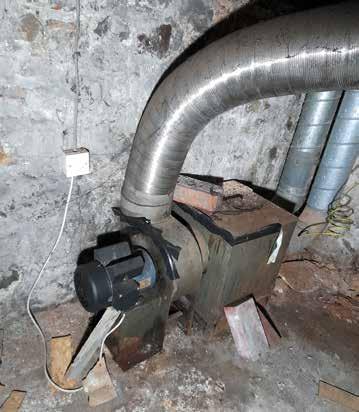
2 minute read
Feeling the heat
What is it like to work in the commercial catering sector? We spoke to gas engineer Richard Stowe, who spends much of his time in different kitchens.
Since Richard set up his company Canary Gas in 2015, he has learned an awful lot about gas equipment in kitchens. Whether it’s in takeaways, restaurants, fish and chip shops, hotels or mobile catering units, the Oswestry gas engineer has seen most things.
Food outlets call him so that he can check their catering appliances and provide their gas safety records. But he sees a lot of issues, including burners with no flame supervision devices, problems with interlocks, and extraction that gets turned down or off because kitchen staff feel cold or it’s too noisy – or because owners believe that turning it down will uses less power (this may not be the case as it could put the motor under stress).
When he arrives at site, he always carries out a visual risk assessment first, and sometimes calls Gas Safe Register’s Technical Team for their input. He says problems are often caused by cutting corners on gas safety and maintenance.

“A few years ago at a reputable hotel,” he says, “they had three chefs cooking a lot of steaks. Steaks create a lot of airborne particles but the kitchen was running with no extraction at all. I told the customer that it was a health risk to his staff and issued a warning notice.”
When he returned a week later, the fan had not been fixed.
Richard generally takes the approach of educating and advising his customers about why they need to make sure that kitchens are safe environments.
“We are expected to conduct checks on commercial catering equipment to verify that no products of combustion are present at high levels and when there is often a lack of sufficient air movement to remove the products of combustion, let alone provision for replacement air.
“It’s best to educate users on the dangers but they know that it could cost a lot of money to put things right.” he says. “Some kitchens contain huge pieces of equipment that use a lot of gas – an average fish and chip frying range is 120kW and each pan is a separate unit.”
He’s seen a sharp increase in the number of mobile catering units too, often bought by people who are unaware of the gas safety measures that are needed. “I’ve seen some real horrors that I’ve had to ID straight away. I’ve looked at it and I’ve thought, how have you managed to stay alive? Why would you look to buy a catering trailer or van and not take a professional with you who knows about it?” ■
All photos taken at jobs attended by Richard Stowe to it. Notice that it’s bending roof a cellar. Not a good idea because the corrugations trap the high fat content that comes off all frying ranges. It’s a fire hazard, to say the least
Richard wasn’t always a gas engineer: he’s also a time-served sheet metal worker and coded welder. He worked in aerospace before starting his own company in 2002, designing and making commercial extraction companies, which is still running alongside Canary Gas.
As well as holding domestic competences in natural gas and LPG, he has COMCAT 1,3,4 and 5 and TPCP1.
The mobile catering trailer above was a real carbuncle, with dangerous scenarios waiting to cause a serious problem. Whoever fitted it obviously thought it was OK to fit rubber hoses adjacent to a burner. The burners were controlled with needle valves, which were leaking gas. Richard says he is amazed that nobody was seriously injured or worse






